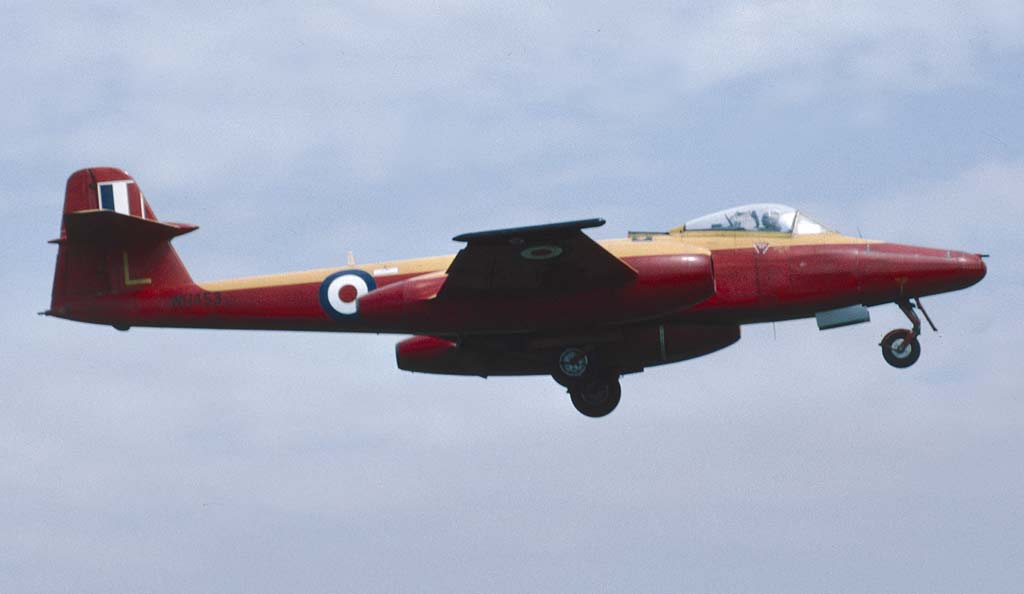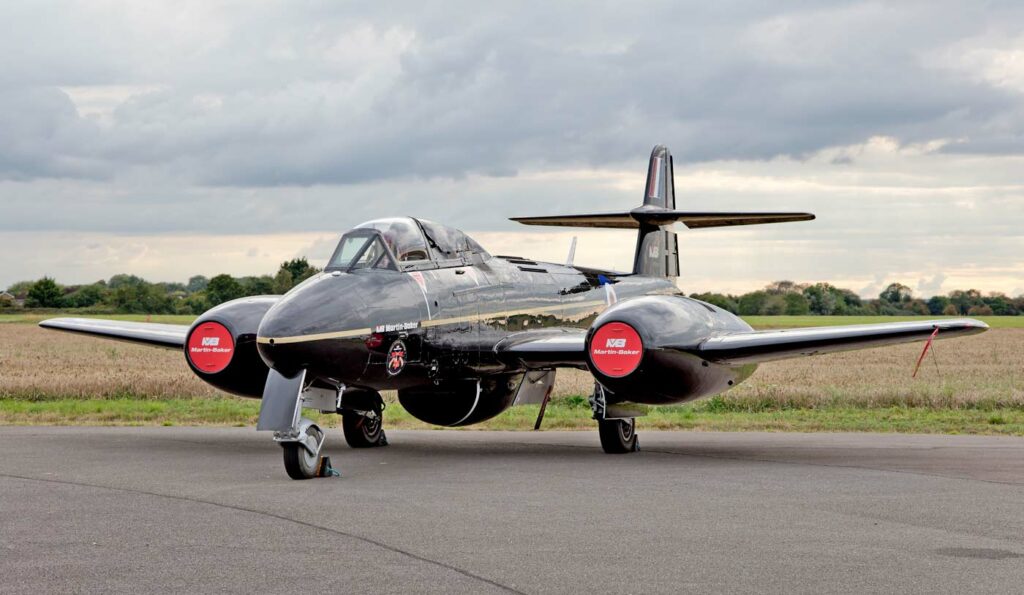The Gloster Meteor, Britain’s first jet fighter, operational in WWII, known for its twin-engine design, and significant role in the transition to jet-powered flight.
This article provides an in-depth look at the Gloster Meteor, the first British jet fighter and a significant aircraft in the transition from propeller-driven to jet-powered aviation. It covers the historical context, design considerations, performance characteristics, military use, and the impact of the Meteor on aviation. The history section discusses why it was developed and its first flight, while the design portion focuses on its technical aspects and innovations. Performance analysis compares the Meteor with its contemporaries, and the military use section examines its combat roles and effectiveness. The conclusion reflects on the Meteor’s legacy in aviation history.
The Gloster Meteor, a trailblazer in the era of jet aviation, marked a significant advancement in military aircraft technology during World War II.

History of the Development of the Gloster Meteor:
The Meteor’s development was driven by the urgent need for faster, more advanced fighter aircraft during World War II. Britain sought to counter the emerging threat of German jet fighters like the Messerschmitt Me 262. The Gloster Aircraft Company, under the guidance of George Carter, took on the project, partnering with Frank Whittle’s pioneering jet engine technology.
The program, initiated by the Air Ministry, aimed to harness the potential of jet propulsion to achieve superior speed and performance over propeller-driven aircraft. The Meteor’s first flight occurred on March 5, 1943. It did not have a NATO nickname, as it was developed before the formation of NATO.
Design of the Gloster Meteor:
The design of the Meteor was a balance between innovation and practicality. It featured a wingspan of 13.1 meters (43 feet) and a length of 12.57 meters (41 feet 3 inches). The aircraft was powered by two Rolls-Royce Welland turbojet engines, making it the first British aircraft with such a propulsion system.
The Meteor’s design incorporated a conventional straight wing and tail-dragger landing gear. While the straight-wing design limited its high-speed performance, it provided stability and ease of control, crucial for early jet aircraft.
One of the drawbacks was the initial unreliability of the early jet engines and the aircraft’s limited high-altitude performance compared to later jet designs. However, the Meteor was a significant step forward in aerodynamics and jet propulsion.
Performance of the Gloster Meteor:
In terms of performance, the Meteor was ahead of its time. It could reach a top speed of about 800 km/h (500 mph) and had a service ceiling of 13,000 meters (43,000 feet). Its range was approximately 965 kilometers (600 miles).
When compared to the German Me 262, the Meteor was slower but had better low-speed handling and was more reliable. Its performance was a significant improvement over propeller-driven fighters of the era, like the Supermarine Spitfire.

Military Use and Combat of the Gloster Meteor:
The Meteor saw limited combat during World War II, primarily used against V-1 flying bombs. Its armament typically consisted of four 20 mm Hispano cannons.
Post-war, the Meteor served in various roles, including as a fighter-bomber and in reconnaissance missions. It saw action in the Korean War and was used by several countries, including Australia, Belgium, and Israel.
The Meteor was eventually outclassed by newer jet fighters like the North American F-86 Sabre and was phased out of frontline service. However, it continued to be used in secondary roles and by various air forces into the 1960s and 1970s.
The Gloster Meteor holds a significant place in aviation history as Britain’s first operational jet fighter and a key step in the evolution of military aviation. It bridged the gap between the propeller and jet eras, demonstrating the potential and limitations of early jet technology. While it was soon surpassed by more advanced designs, the Meteor’s legacy as a pioneer of the jet age remains enduring.
Back to the Fighter Jet section.